Despite tough on-court season, 76ers' sales staff finds success

PHILADELPHIA — 76ers head coach Brett Brown’s barren roster fought tooth and nail only to muster 10 wins this season. General manager Sam Hinkie resigned as ownership swept the rug out from underneath him and his patient rebuild. Yet while near-chaos ensued in the franchise’s basketball operations, the team’s corporate faction experienced rousing success this season.
Even before the Sixers were granted the No. 1 overall pick on Tuesday, Philadelphia ranked third in the NBA in new season ticket sales for the 2016–17 campaign. Shortly after the calendar flipped to 2016, the Sixers saw the largest single sales day in organization history and they have renewed over 90% of its season ticket members each of the last three years.
“The culture of the Sixers’ sales staff has been the main driver of their success,” says Brendan Donohue, the NBA’s Senior Vice President of Team Marketing and Business Operations. “It’s vibrant, fun and contagious, with a terrific group of hard-working professionals who want to be a part of something bigger than themselves.”
• MORE NBA: Mock Draft 4.0: No. 1 debate | Booker's bond with Suns fan
***
He emerges from the door at the center of the room on a hoverboard, materializing out of a thick haze from the nearby fog machine and entering a sea of screaming 20-somethings. This is not a Kanye West album debut. It’s the 76ers’ sales staff’s pregame meeting, and the team’s senior vice president of ticket sales and services, Jake Reynolds, is the moshpit’s emcee. John Wall and the Washington Wizards are in town, the Wells Fargo Center a stone’s throw from the 76ers’ corporate offices in Philadelphia’s Navy Yard. But before Reynolds can detail each associate's game duties for this February evening, he leads the entire staff in a raucous raffle.
The group is huddled at the center of the Sixers’ sales floor, with two 7-foot baskets bookending the aisle in the middle of a maze of cubicles. A hands-slapping-knees drum roll ensues as Reynolds draws poker chips out of an enormous tupperware box, each with staffers’ names printed across the face. Nerlens Noel’s signed jersey and a Jahlil Okafor-autographed poster are up for grabs among other prizes.
A chorus of cheers erupts with each winner, until today’s stock of spoils has been awarded. Or so we thought. Reynolds announces one more give-away. The crowd shrieks in delight with the late addition of new Beats headphones. Only this time, Reynolds draws four names to compete in a rock-paper scissors tournament to claim the prize. The staff clad in designer suits instantaneously plays along, emphatically screaming, jumping and sweating over the schoolyard gambit. “We do that before every game,” Reynolds says. “We walk a very fine line between having fun and having too much fun.” The 76ers now snap instead of clap inside their offices after the building warned their deafening festivities could be heard.
Jeff Hornacek's arrival marks overdue attempt to modernize Knicks
The corporate culture spawned from a brew of hope, zany energy and innovation. At the heart is the Sixers’ sales force, which has gone to greater lengths to incorporate youth than Hinkie did. The Sixers’ 105-person sales team is the largest in the NBA and all of professional sports. Millennials comprise 99% of the department. “They want to run through walls, they want to change the world,” CEO Scott O’Neil says.
The Sixers employ a strict criteria when hiring new sales associates. Management specifically looks for the “three C’s” they deem congruent with their unique culture: Competitiveness, coachability and curiosity. Philadelphia will soon introduce a 25–30 question personality test as part of its interview process, an attempt to compare candidates’ results to those of the Sixers’ elite ticket sales representatives. Additionally, the 76ers utilize a two-week onboarding process to immerse new employees within the office’s controlled chaos, complete with a required reading and book report. Philadelphia swears by The Arbinger Institute’s “Leadership and Self-Deception: Getting Out of the Box.”
The 76ers then uncovered the stimulants for high-level, entry-salaried millennial performance, emphasizing a collective effort, providing daily free food, endless team memorabilia and premium rewards. “We love to share our toys,” says Chris Heck, the 76ers’ Chief Revenue Officer. If the Sixers sold 700 new full-season tickets between Feb. 27 and April 15, the end of the regular season, the team would sponsor an Atlantic City trip for the entire staff. Upon reaching their “stretch goal” of 850 full-season tickets, the entire management team planned to shave their heads. Heck would move his desk from a private office overlooking the waterfront out to the middle of the sales floor. A buzzing clipper sent clumps of hair to the floor on April 27.
• MORE NBA: Irving, Cavs rolling to Finals | Winners, losers from lottery
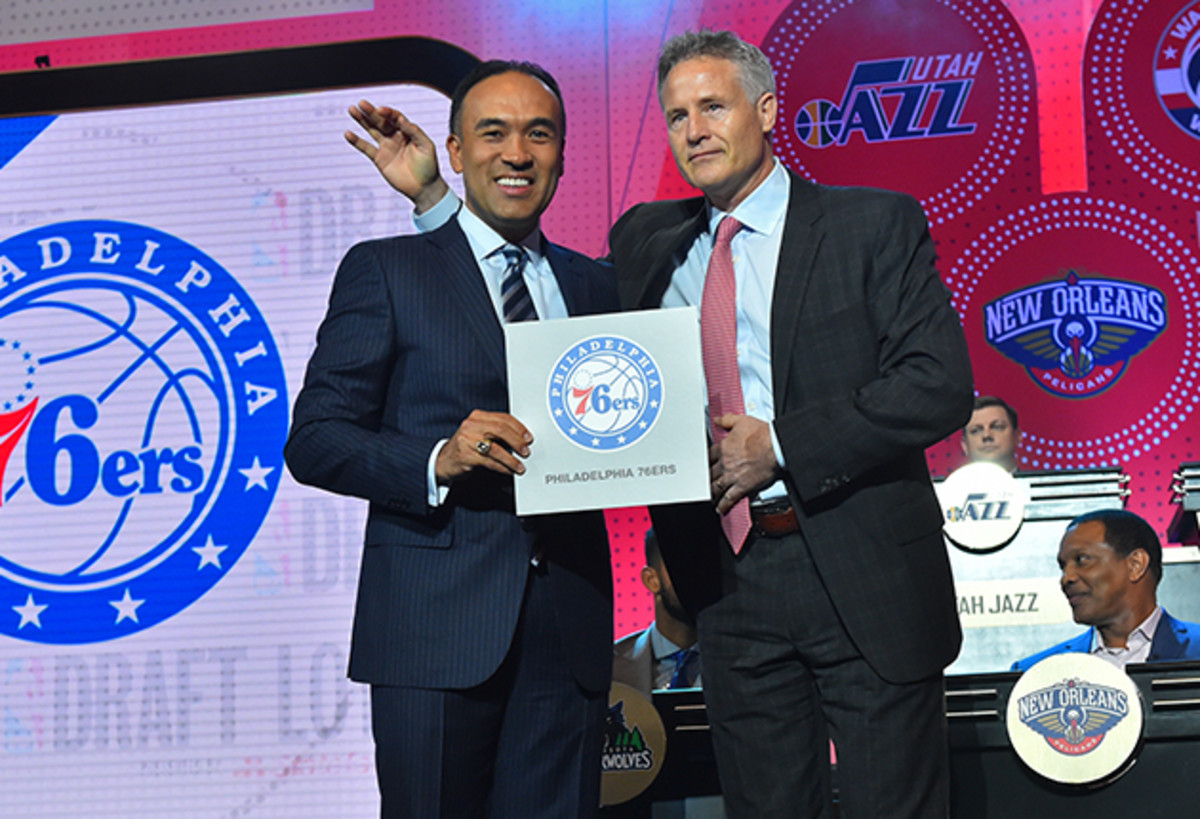
Red banners, printed with the team’s Ballin’ Ben Franklin secondary logo, hang from the sales room’s ceiling, acknowledging all ticket representatives who have ever been promoted within the organization. Framed tie fragments adorn the back wall, having been snipped directly from associate’s necks after completing their first sale over $10,000. The right wall displays a sales and service leaderboard with people’s faces.
At a weekly meeting, the sales team MVP—voted by the reps themselves—is announced. A hard hat, signed by head coach Brett Brown, is awarded to a team member who “did the dirty work.” A championship belt, golden boot and bronze wolf statue also rotate around the office. “There’s a lot of weekly awards,” Reynolds laughs. The Sixers’ five hoverboards are constantly fluttering around the room. Shots are perpetually flung at each basket. “You’re always at risk of being dunked on,” Reynolds warns.
Long process finally pays off for 76ers during draft lottery
“The root metaphor of sales often emphasizes competition and it seems like they’ve emphasized the community and the collective,” says Jesica Speed Wiley, a professor and researcher of organizational communication at Northeastern University.
That interruption of traditional sales culture sparked an energy this season which reverberated through the phone as associates sold the team’s message to their fan base. The 76ers wholeheartedly believe in the team’s surplus of future assets, despite Hinkie’s departure. “You’re selling one of two things: You’re either selling championships, or you’re selling hope,” Reynolds says. Ticket reps have pitched fans on the tantalizing prospect of healthy Joel Embiid, flashes of greatness from Nerlens Noel and Jahlil Okafor, unsung projects Jerami Grant and Robert Covington and overseas prospect Dario Saric. There's also the No.1 pick in June's NBA draft. “This will soon become a harder seat than not,” Heck says.
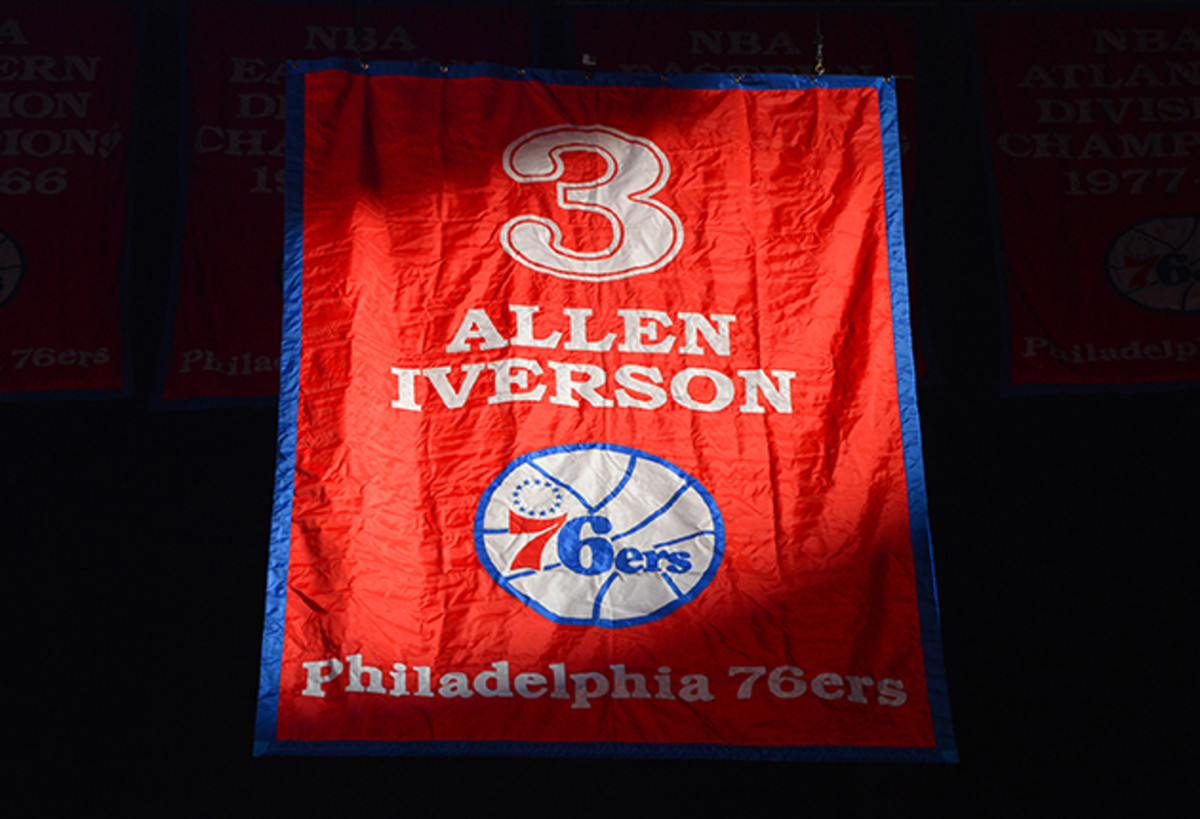
The hopeful intimation can only go so far with the on-court product so obviously lacking. To counteract the potential fragility of their message, the Sixers have created one of the most fan friendly arena experiences in sports. On opening night in 2012, the Sixers unveiled Big Bella, a 600-pound t-shirt gun capable of spitting out 100 T-shirts every 60 seconds. In August 2014, the Sixers purchased Quince Imaging’s cutting-edge, projection-mapping technology to be beamed onto the Wells Fargo Center court.
Philadelphia is in a continuous search to reinvent the overall game experience. While Hinkie was scouting Melo Trimble and Diamond Stone at the University of Maryland this spring, he noticed an entertaining halftime hopscotch game and immediately phoned O’Neil. The 76ers regularly challenge one fan to a halfcourt shot during home games, with free season tickets on the line. There’s been internal talks of installing a money-grab booth on the concourse, offering fans an opportunity to grab as many bills as they can toward a discount for future ticket purchases. The corporate brass considered distributing fly swatters to fans. The Sixers do rank third in the league in blocked shots after all.
Beating the NBA Draft Lottery Odds
1993 Orlando Magic
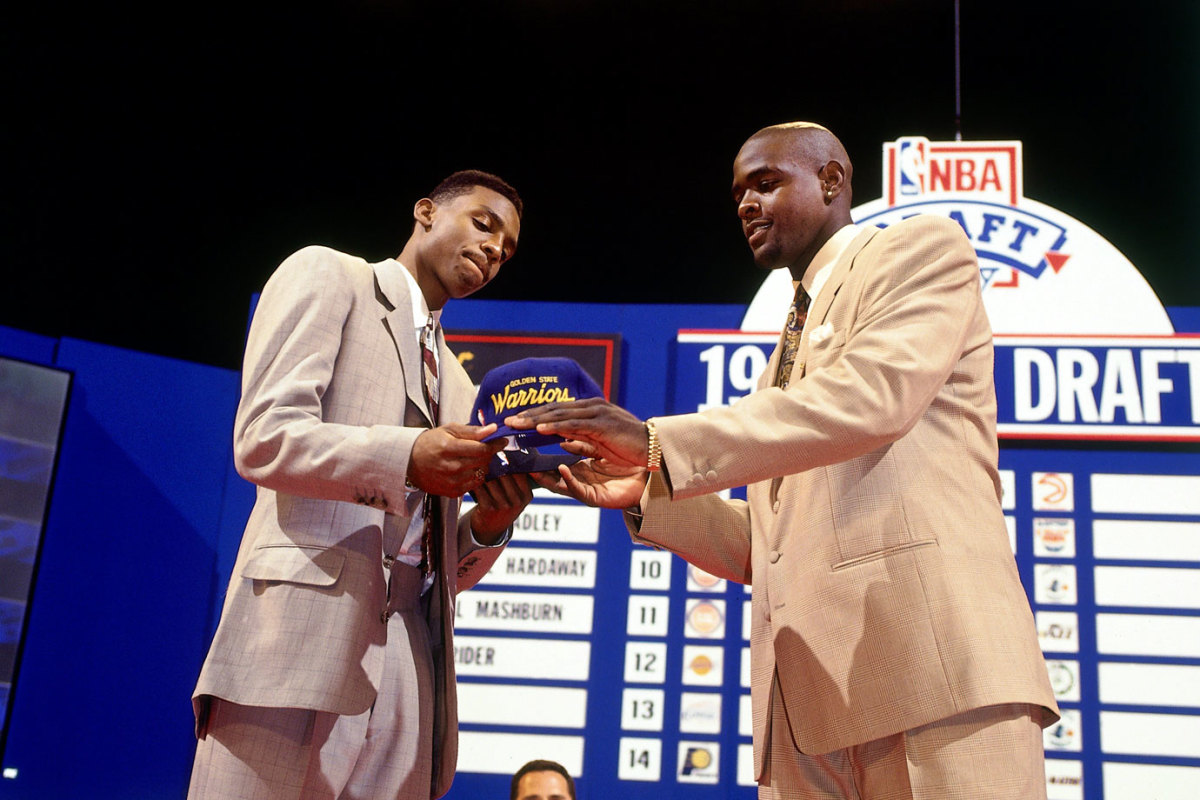
No team beat the odds quite like the 1993 Magic, who, after barely missing the playoffs at 41-41, made good on their 1.5% chance (1 Ping-Pong ball out of 66) to claim the top spot for the second consecutive season (they had snagged Shaquille O'Neal in '92). Orlando wound up selecting Chris Webber and trading him to Golden State for third overall pick Penny Hardaway and three first-round picks. Two years later, Shaq and Penny led the Magic to the NBA Finals.
1995 Golden State Warriors
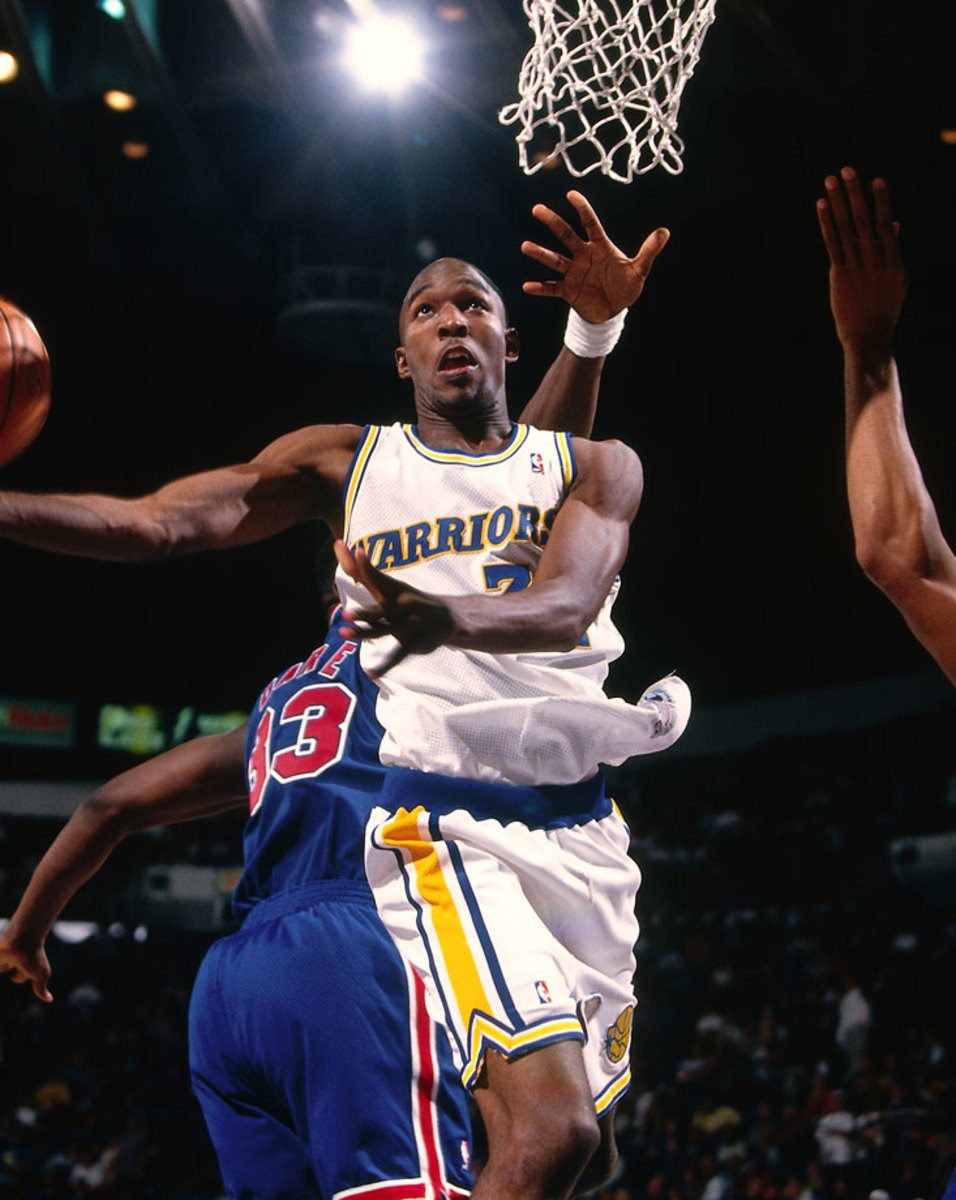
After the Warriors delivered on their 9.4% chance, then-general manager Dave Twardzik said, ''Whoever you take, some people are going to say, 'How could pass on this [other] guy?' '' Twardzik experienced the second-guessing first-hand: The Warriors chose forward Joe Smith while the rest of the top five was Antonio McDyess, Jerry Stackhouse, Rasheed Wallace and Kevin Garnett. Smith went on to play for 12 different NBA teams over 15 years, never once named an All-Star.
2000 New Jersey Nets
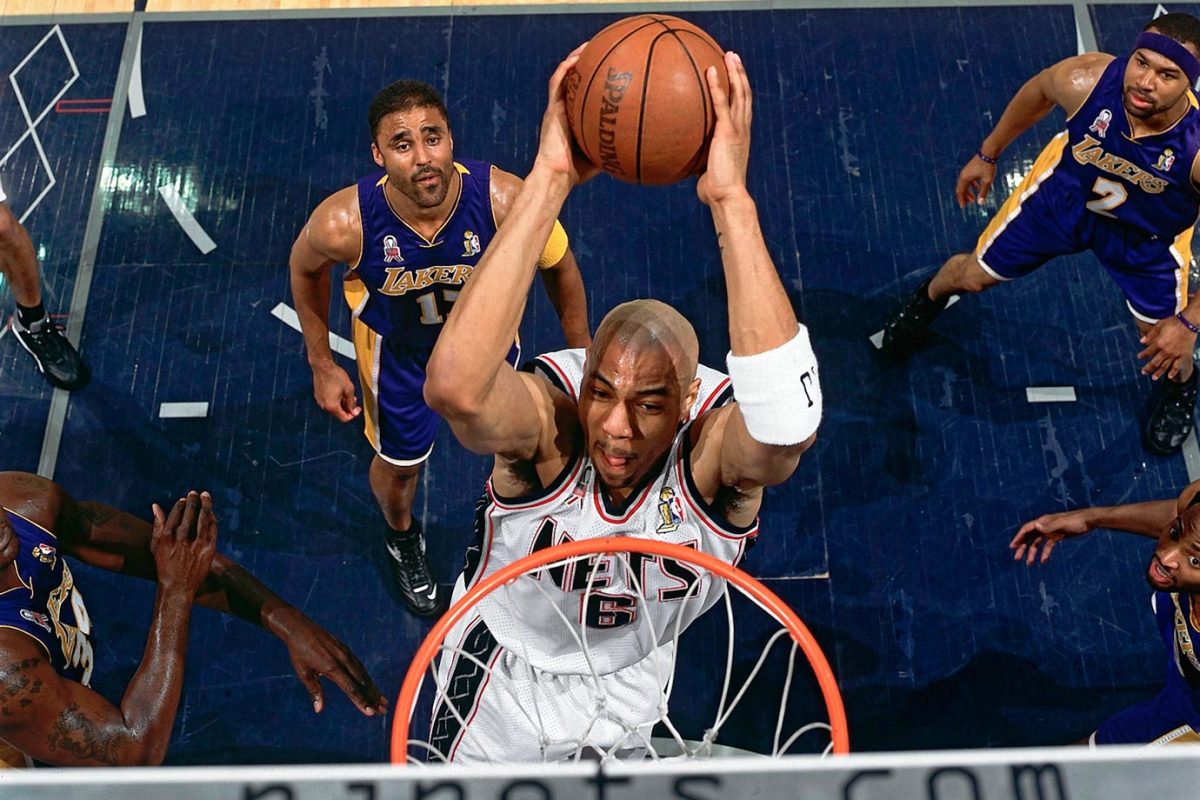
Pegged to draft seventh after a 31-51 season, the Nets instead cashed in on their 4.4% chance of winning the lottery. New Jersey picked forward Kenyon Martin, who proved to be a key part of back-to-back Finals teams in 2002-03 before being shipped to Denver as part of a sign-and-trade deal in 2004.
2002 Houston Rockets
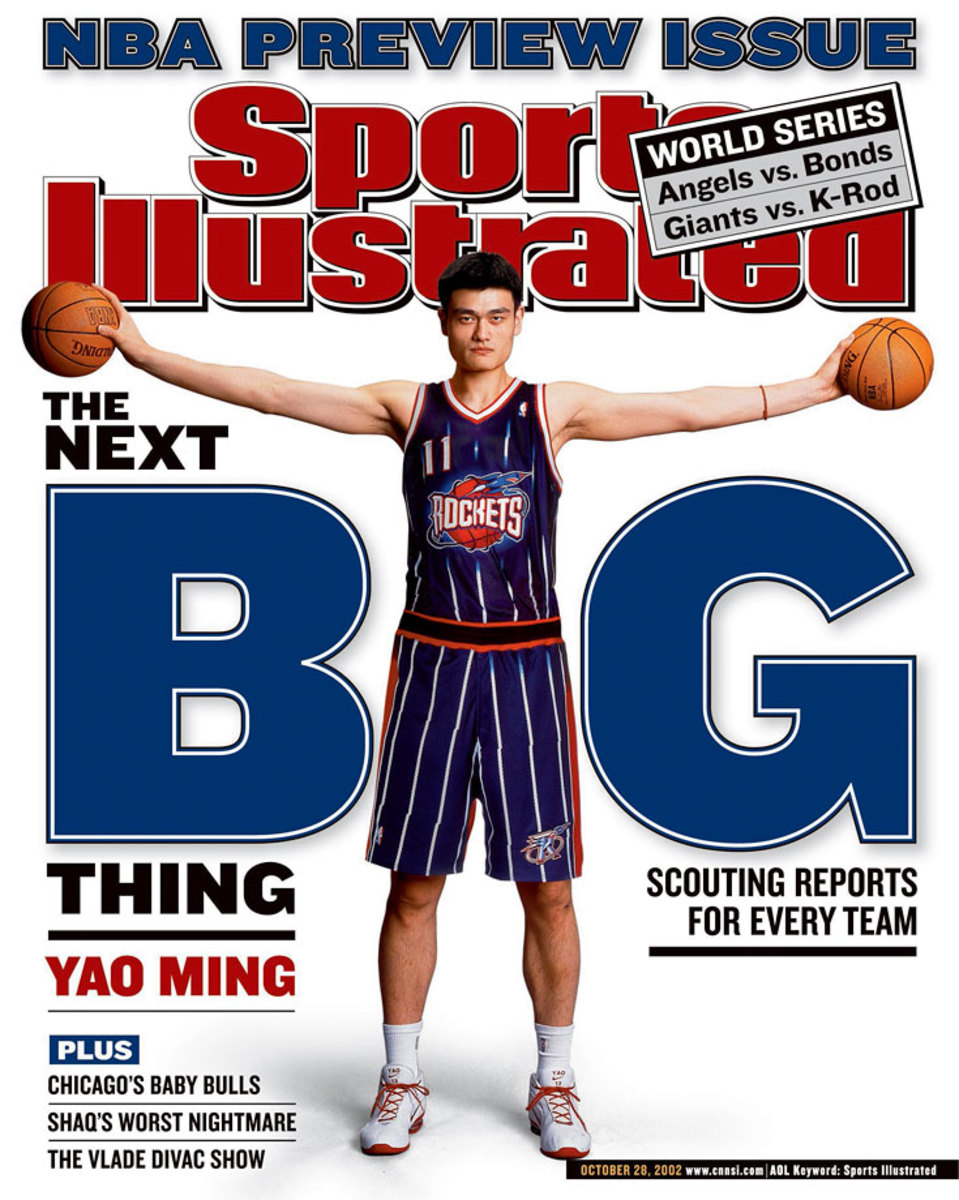
An 8.9% chance was enough for the Rockets to leapfrog four teams and win the Yao Ming sweepstakes. Yao was productive when healthy, but the healthy part didn't happen nearly as much as Houston would have hoped. The 7-6 center retired in July 2011 after nine seasons in which he averaged 19 points, 9.2 rebounds and 1.9 blocks.
2005 Milwaukee Bucks
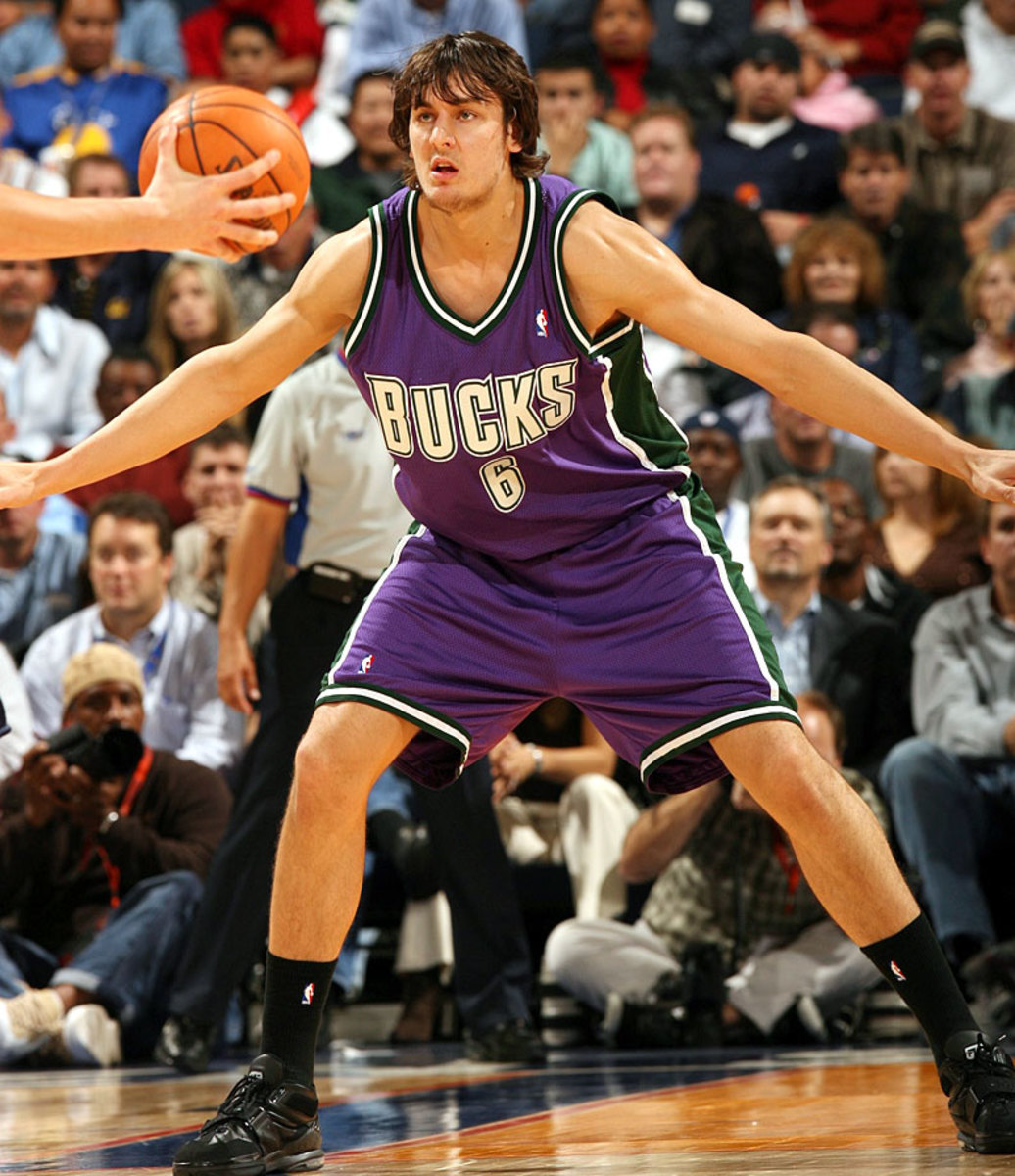
The Bucks, with a 6.3% chance, jumped from sixth to first and selected center Andrew Bogut ahead of point guards Chris Paul and Deron Williams. Bogut spent seven years with the Bucks, where he led the league with 2.6 blocks in 2010-11, before being traded to Golden State in 2012.
2006 Toronto Raptors
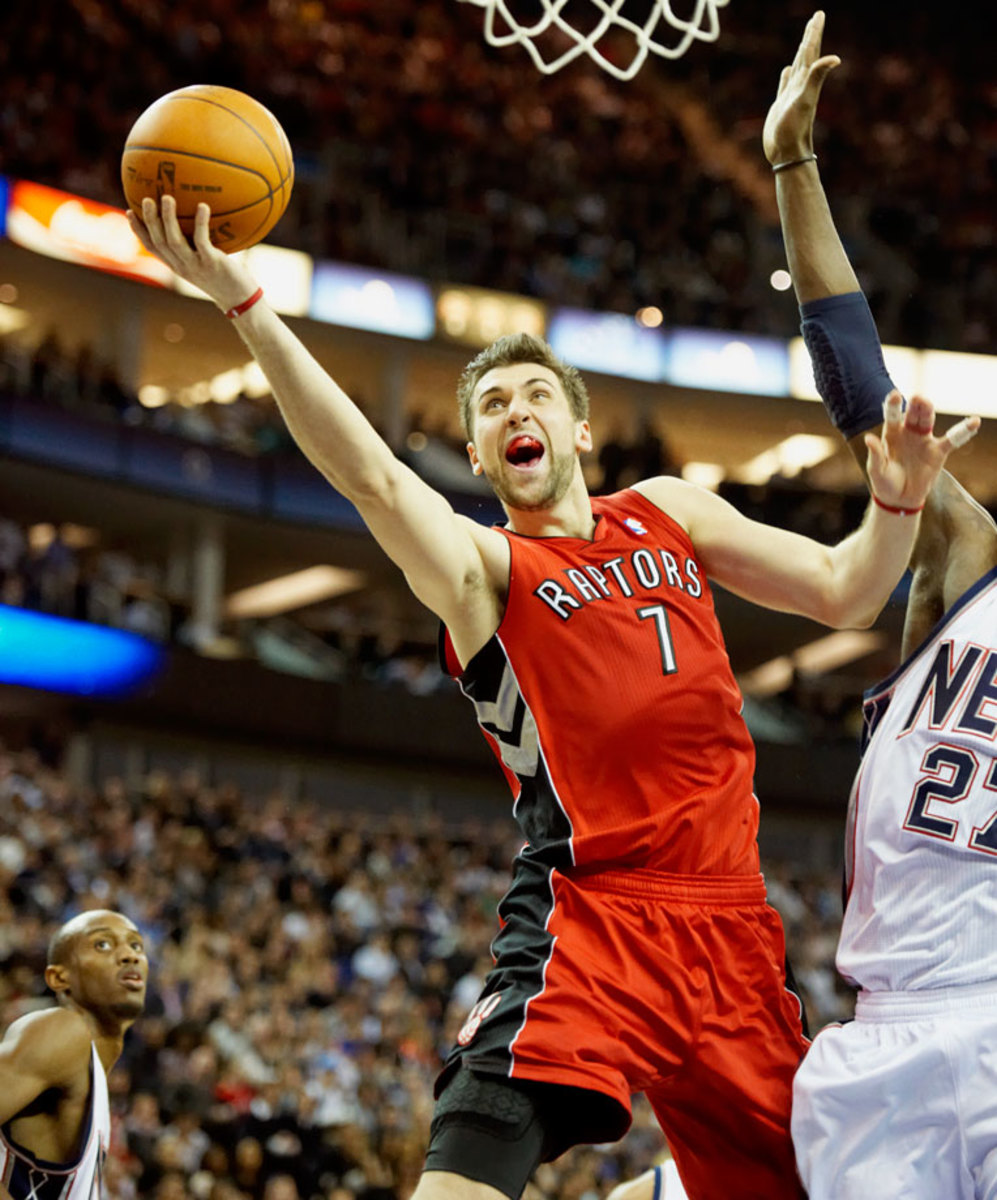
General manager Bryan Colangelo entered his first draft in Toronto with the biggest prize after the Raptors vaulted to the top despite only an 8.8% likelihood. The Raptors used the choice to make Italy's Andrea Bargnani the NBA's first European No. 1 pick. Bargnani averaged a career-high 21.4 points in 2010-11 and followed that with 19.5 points in an injury-shortened 2011-12, but he's been criticized for his defense and rebounding. In 2013 Bargnani was traded to the Knicks, where injuries have kept him off the court more often than not. The Nets signed Bargnani to a multi-year contract in 2015, only to waive him in Feb. 2016.
2007 Portland Trail Blazers
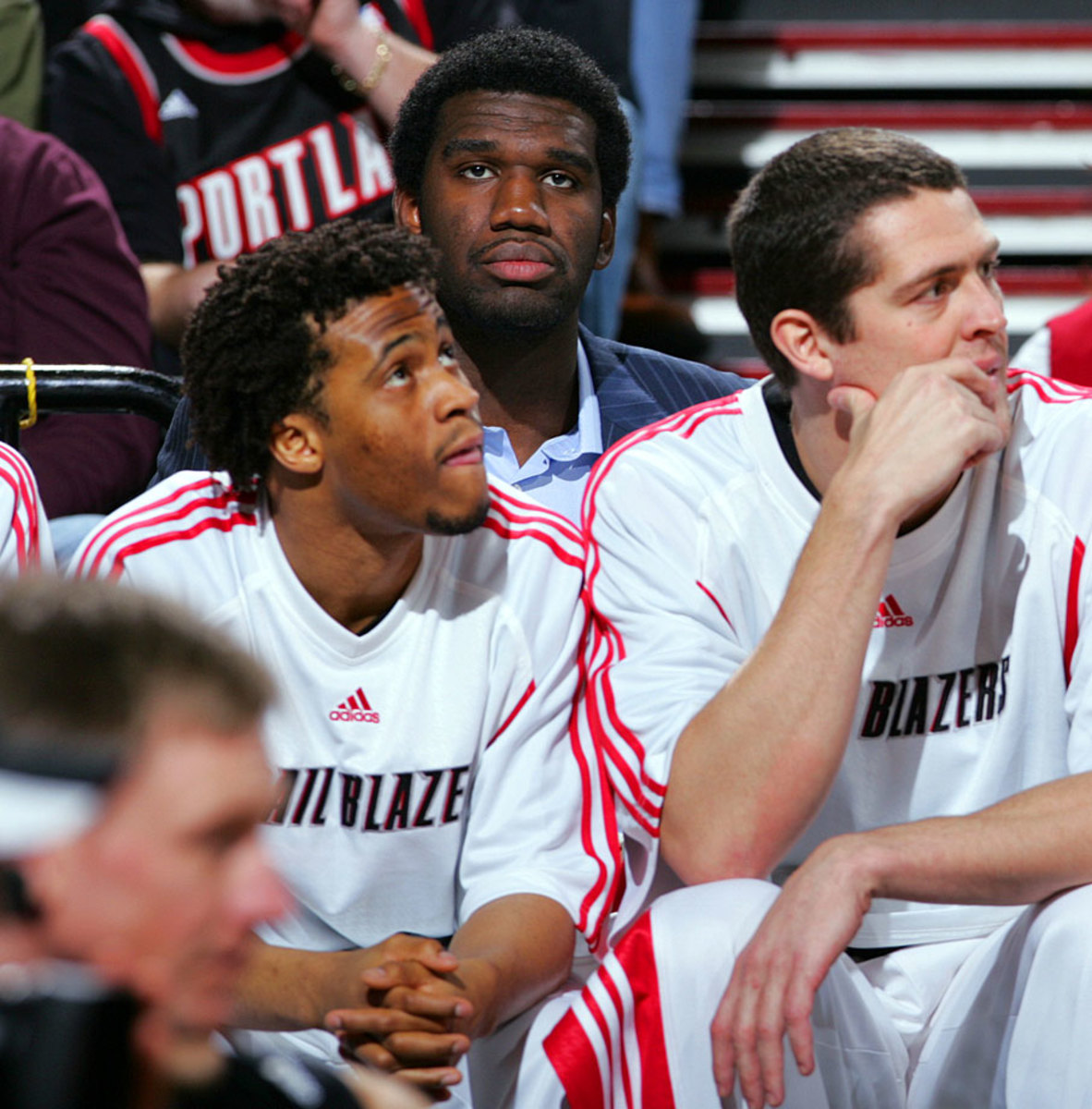
While the teams with the three worst records — Memphis, Boston and Milwaukee — got the fourth, fifth and six picks, Portland won the lottery with its 5.3% chance. The windfall didn't pay off, however, as the Trail Blazers passed on Kevin Durant in favor of Greg Oden, who played only 82 regular-season games over his first five seasons because of persistent knee injuries. The Blazers waived Oden in March 2012 and after a brief stint with Miami two years later, Oden hasn't played since.
2008 Chicago Bulls
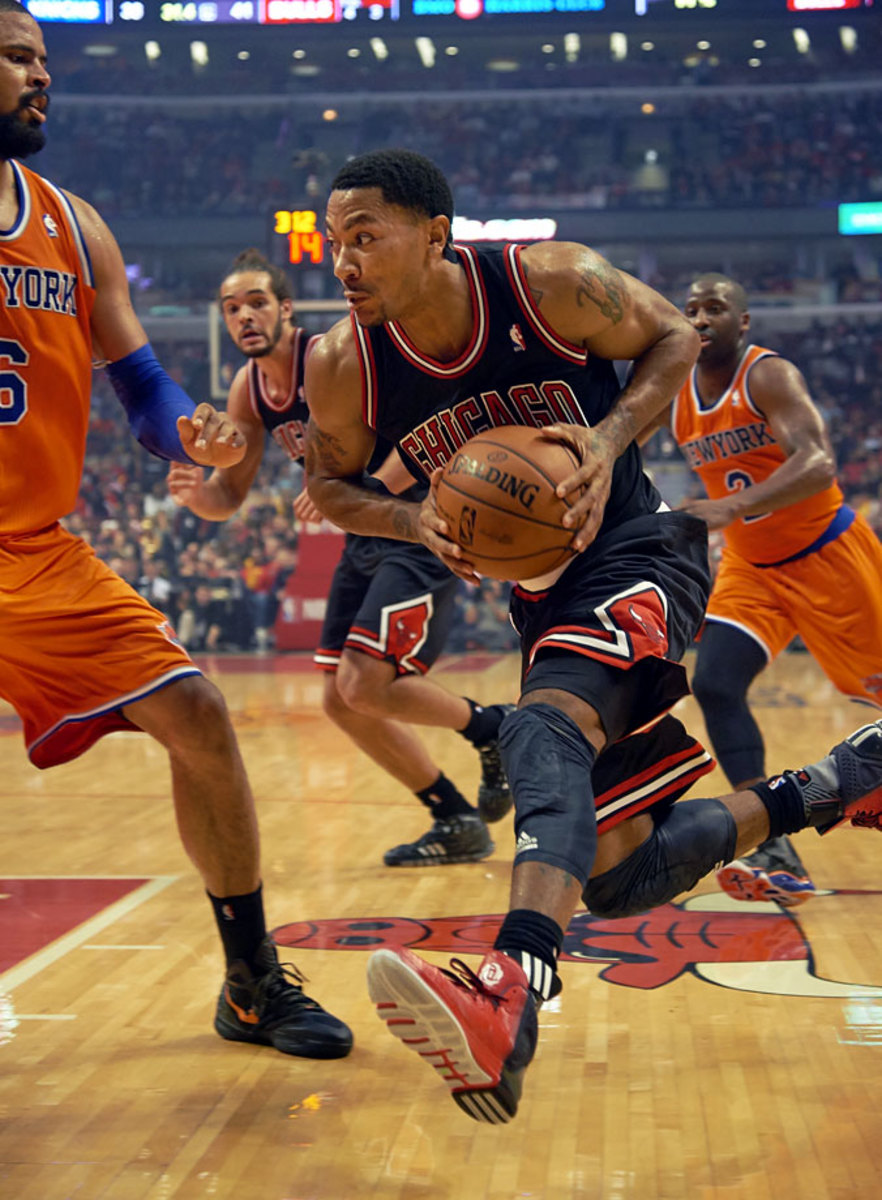
The Bulls turned their 1.7% chance into the first pick. Chicago selected native Derrick Rose, who was the 2008-09 Rookie of the Year, the league MVP in 2010-11 and a three-time All-Star. Since May 2012, however, Rose has undergone three knee surgeries which have caused him to miss a significant amount of time.
2011 Cleveland Cavaliers
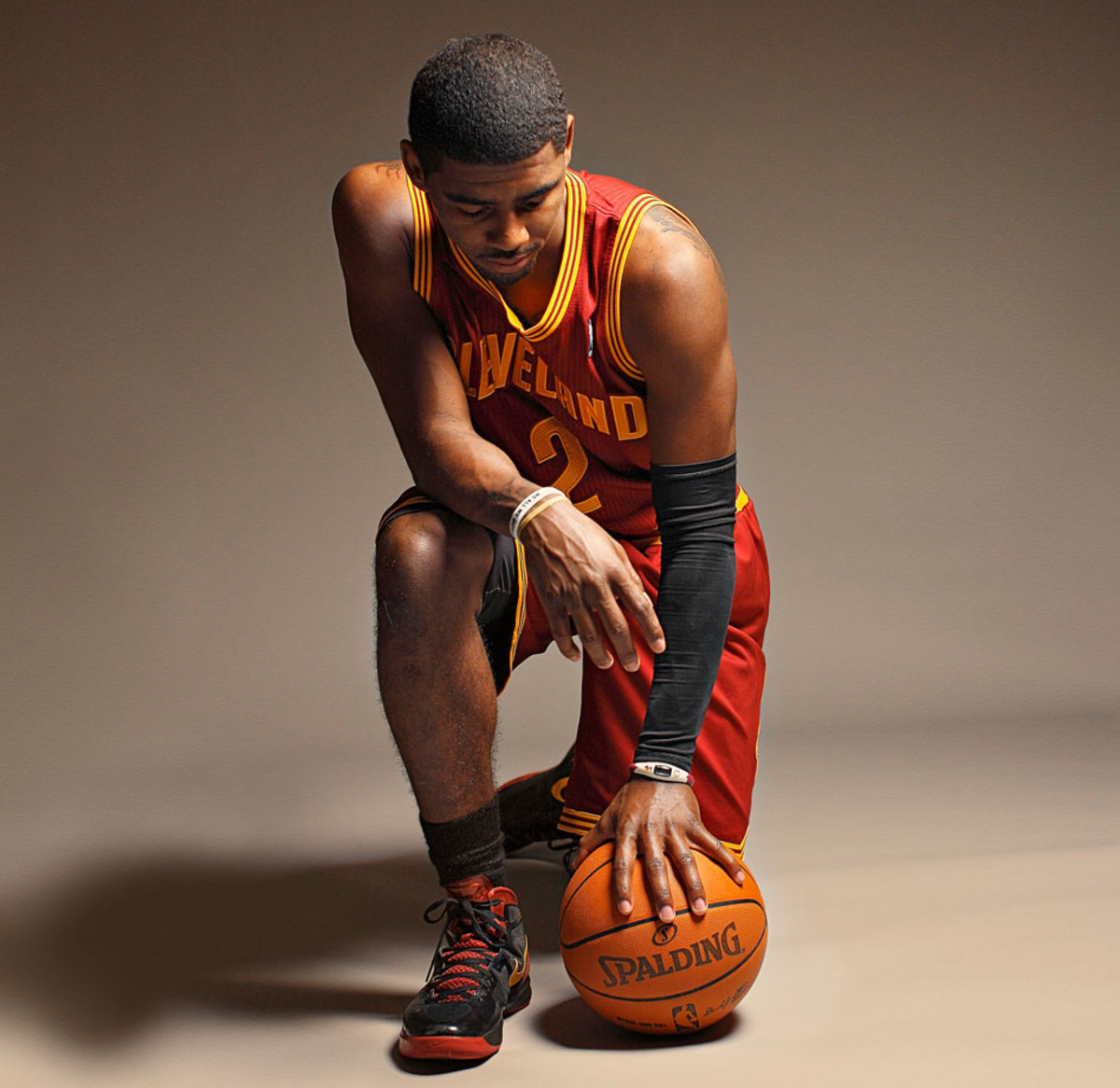
The Cavaliers used the pick obtained in a trade with the Clippers to win the No. 1 pick despite just 2.8% odds. That put them in position to draft Duke point guard Kyrie Irving, who turned into the Rookie of the Year and the centerpiece of their post-LeBron rebuilding effort. The 2013, '14 and '15 All-Star was given some help entering the 2014-15 season with the signing of free agent LeBron James.
2014 Cleveland Cavaliers
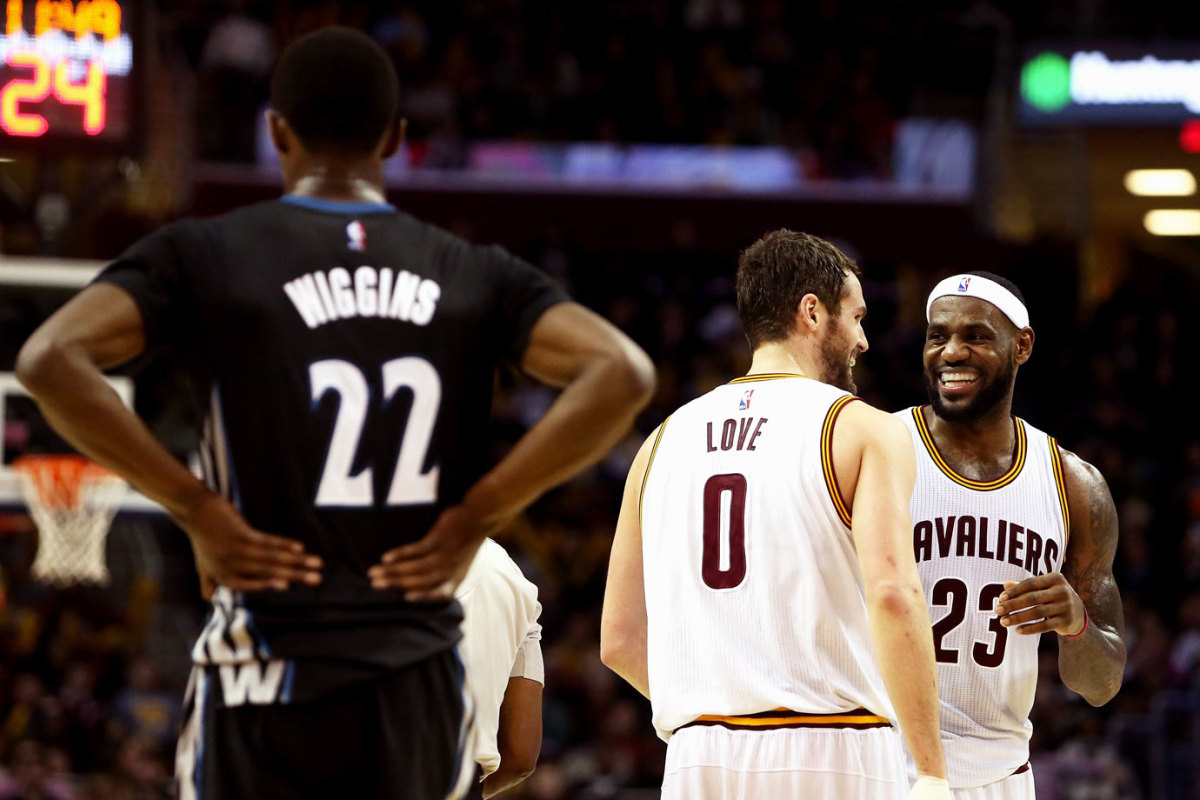
Eight teams had better odds than the Cavaliers, who lucked out yet again with just a 1.7% chance this time. Their selection of Andrew Wiggins parlayed into a trade with Minnesota to acquire Kevin Love two months later. Wiggins went on to win Rookie of the Year with the Timberwolves while Love's numbers dipped with the Cavs and he suffered a dislocated shoulder in the team's 2015 first-round sweep of the Celtics.
“I want to create an atmosphere where a grandma, an 8-year-old kid, and a guy in a suit are all jumping for T-shirts, cheering, singing, dancing, and rooting for the Sixers,” O’Neil says.
Perhaps the perfect confluence of it all lies in Brown’s pregame ritual. Minutes before delivering his pre-tip locker room speech ahead of each home game, the spry 55-year-old coach meets with season ticket holders in the arena’s press conference space. Brown pitched the idea himself during a weekly meeting. O’Neil asked if the New England native would be comfortable meeting with fans the following Tuesday. “And he shakes his head. ‘No, every game,’” O’Neil recalls. “It is pretty amazing how candid, open, and engaging he is in telling our story and walking fans through the roller coaster ride we are on.”
***
After raising Allen Iverson’s No. 3 to the rafters during halftime against the Wizards on Mar. 1, 2014, the 76ers brought the banner back down to the floor following Philadelphia’s loss to Washington. Season ticket holders lined the court to take pictures next to the iconic fabric. Wall bashfully emerged from the visiting locker room to ask the Sixers brass if he could pose next to Iverson’s number, merrily taking part in the once-in-a-lifetime opportunity. Somehow, the 76ers bottled Wall’s energy and shared it with a tuckered fan base. Whether that energy carries on—only time will tell.
